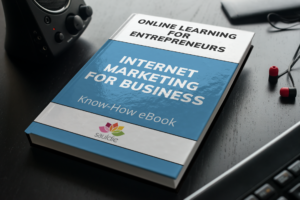Even though AdSense is the most popular publisher programme for PPC advertising, it still has problems and disadvantages. Advertisers have preferred to advertise in search since AdSense debuted because they believe visitors are less targeted. This is a valid concern that makes perfect sense. If you're on a website and you see an advert, it's likely that you're not paying attention to the content. Also, Adsense has become so popular that consumers can tell it apart from other adverts. This can lead to people simply ignoring them without paying any further attention.
Bloggers have been discussing this controversial topic, which could have a lot of truth to it. Many people have criticised Google for this, citing their decision to include the words "Ads by Google" below the ad. Many publishers also never make the money they expected when they started the programme. Those who only get 30-40 visitors a day to their site probably won't even make a single dollar a day. Many advertisers quote conversion rates of 1.5 to 5 % for converting visitors to clicks, but only earn about $0.10 per click.
Even if the bill doesn't add up, you can't blame the adverts or Google if you don't get enough visitors. The key is to target people to your website who are likely to click on adverts. However, it is claimed that other programmes, such as those that allow publishers to share 75 per cent of advertising profits, could make this easier.
Another disadvantage of AdSense is that it has become almost obnoxious. People are constantly confronted with it because it appears on websites that appear to have been created DIY-style. The only way to counter this is for AdSense to evolve in a way that makes it more attractive to larger brands, while limiting those already using AdSense.
Google Adsense also has to deal with the problem of click fraud, which is estimated to account for more than 15% of all clicks on content. As a result, advertisers who have been significantly affected by this have shifted their advertising to other programmes or limited their advertising to search. This has led to less competition for content and consequently less revenue for publishers. Publishers who used to run very profitable adverts are now forced to change their content in order to be able to run adverts at all. This is mainly due to publishers' mistakes, but it's a problem that, if left unresolved, could bring AdSense to its knees.
Google Adsense also has the flaw that it does not adequately fund its search function. Other similar systems offer higher rates and if publishers decide in favour of another provider, marketers and publishers will face challenges.
Although Google does not adequately remunerate search, another major problem with Adsense is that it does not have a robust library of graphical adverts. Many advertisers would like to offer aesthetically designed ads, but this has yet to be realised. As there are various alternative programmes for the distribution of PPC graphics, this could cause problems. Although this is not a problem for all publishers, many claim that the adverts on their website do not change, so regular users do not see the new adverts and therefore do not visit them.
This problem could be solved by rotating adverts. But how should rotating adverts be linked to advertisers who pay a price per click? These are all questions that Google needs to answer if Adsense is to remain the industry leader.
Adwords, on the other hand, has many advantages and is still the leader in the industry. Advertisers can choose their CPC rates so that they can use the service even if they do not achieve the expected results and at the same time reduce their costs.
Although there are still some challenges with AdSense, the programme remains the most popular with publishers, while Google Adwords remains the most popular with advertisers. With a database of over 140,000, Adwords will remain the most popular for some time to come.

